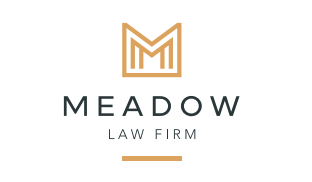Susan B (0:00:05) – Hello, everyone. Welcome to another episode of The Leverage Report. Super excited today to have Danae Benton with The Cochran Firm on to talk about the recent Ozempic case management conference. Danae, before we dive in and we learn about all the things you learned about at the conference, would you mind just taking a moment and sharing a little bit about your background?
Danae B (0:00:24) – Sure. So I’m a partner with The Cochran Firm. I’ve been doing mass torts my entire career. I’ve worked on everything from transvaginal mesh back in the early 2010s-2011s, all the way through right now working on Ozempic. And so mass torts is kind of what I do.
Susan B (0:00:41) – Yes. Okay, so tell us a little bit about the conference. Where was it, how many people attended, and who were the attendees? What was the main purpose of the conference?
Danae B (0:00:49) – Yeah, so we had our first case management conference before Judge Pratter. It was in the Eastern District of Pennsylvania. It’s located in Philadelphia, so the city of brotherly love. It was a great first case management conference. The first time you go in for a CMC, it’s always about establishing the MDL, what the processes, procedures are going to look like. You’re talking about leadership, so it’s going to be a mix of plaintiffs counsel and defendants. There was a good showing of plaintiffs counsel. We’ve definitely filled up the courtroom, and I have to say kudos to judge Pratter and her team. They were extremely welcoming to all of us. They had a little welcome reception refreshment station set up with coffee and cookies and all that sort of stuff. So definitely one of the warmer welcomes I’ve gotten as a plaintiff’s attorney in a courtroom. And it was great seeing such a cohesive and unified plaintiffs bar come, you know, for sure Eli Lilly and Novo Nordisk had their counsel there and ready to go as well. And it was set up to talk know how we’re going to move forward with this litigation, with it being a new MDL.
Susan B (0:01:50) – And so is this like a one day, two day event?
Danae B (0:01:53) – One day. So we had a couple hours before Judge Pratter in her courtroom, and we went through everything from what is leadership going to look like? What’s the process to get that done? And good news is that you have a unified plaintiff’s bar. So we’re going to be proposing a slate to judge Pratter for her to review and take a look at that’s going to get submitted this week. And then as far as defendants, they kind of self organized, and nothing’s that she needed to do there, to appoint, and then we walk through what the expectations are as far as filings with regards to discovery, plaintiff’s fact sheet, walking through her expectations with protocol procedure, how often we’re going to have these case management conferences, all that good sort of stuff about establishing what to expect in this litigation, talking about motion practice and what she expects and what she does and doesn’t like. One of the things that she mentioned that she’s not a big fan of is letter briefs. She said to err on the side of formality with her, and so she really doesn’t want to see a bunch of letter briefs. She’d rather have it officially briefed out. And she also enjoys oral arguments, any of the topics.
Susan B (0:02:56) – Can you go into more detail some of the things that attorneys in the industry that are looking to get into Ozempic, of course, they’re interested to hear some of the details and high levels. Is there any specific agenda items that you can get into?
Danae B (0:03:09) – Yeah. So as I discussed, leadership is submitting a proposed slate to the judge this week. So we should know leadership for the Olympic MDL on the plaintiff’s side here very soon, by the end of the month. And then as far as the active litigation, Judge Pratter was curious if there was a two track system that was going to be needed for the manufacturer Eli Lilly versus Novo Nordisk. At this time, plaintiffs and defendants reunified that a single track is sufficient that may get re evaluated later on in the course of the litigation. Plaintiffs leadership and defendants both stated that they wanted to go ahead and get a plaintiff fact sheet put together sooner rather than later. So we’re hoping to see a proposal of what a plaintiff fact sheet would look like in the next 30 or so days. That’s going to make sure that we have proof of use and proof of injury sufficient for these claims as part of that discovery process for anything that’s filed. Currently, Judge Pratter said she had 66 cases, we think we’re closer to 100 at this point that have been filed into the MDL. We’re anticipating that there could be between 10,000 to 20,000 of these cases that get filed ultimately into the MDL. And part of that process is going to include the bellwether. Now, something that’s different than other litigations that attorneys may be interested in is that there is currently not a proposal or a plan to put together a master long form complaint. So that will impact overall how people are filing without having a master long form. It’ll be your own individual filings the judge is also looking at streamlining the Prohawk VJ process to make that process easy for everyone. And then she also stated that she’s a big fan of doing stuff in person. So she’s anticipating having these case management conferences once a month. On the plaintiff’s side, she will have dial in options for those who are not on leadership who need to just listen in and attend. But for those that are going to be speaking and presenting, she wants it to be in person, wants it to be a more formalized process. And so we’ll be working with her and her amazing staff to make sure that that goes off smoothly and to make sure that we get this litigation rolling and going quickly.
Susan B (0:05:16) – Yeah. Anything that you learned going to change what you personally are doing at the Cochrane firm on handling these cases? Yeah.
Danae B (0:05:23) – So talking to some of the other attorneys there, it was really great to see that everyone seems to be unified in keeping the case criteria pretty tight. And so there was some talk about, well, maybe it can be opened up, maybe we can look at external products and other injuries. And based upon what I’m hearing at the case management conference and what I’m hearing from talking to my fellow plaintiffs lawyers, especially those who are slated to be on leadership, I’m going to be keeping my cases very much tight. And to what the original JPML arguments were for and what this MDL was created for, which is going to be that Ozempic, Wegovy, Mounjaro, Zapbound cases that are focused on the gastroparesis, stomach paralysis, Ileus, things of that nature.
Susan B (0:06:06) – Okay. And firms that are interested in looking at acquiring new cases, is there any advice that you would give them?
Danae B (0:06:14) – Yeah, I would say make sure that you’re really taking close attention to the dates of usage, the onset, time period. Make sure that you feel confident and comfortable that you’re looking at a product that is a manufactured product, not a compound product. That’s something that you have to keep in mind with this litigation is that a lot of patients out there got a compounded product and not the actual manufactured product. So ask the question of your potential clients. Did you get a pin that you use that you twisted and you had to inject in your thigh or your stomach that came premixed and ready to go? Was it compounded for you and you had to do an injection from a vial? Because that’s going to give you insight into whether or not it’s an actual manufactured semaglutide or if it was a compounded drug, and it’s going to matter because compounded know aren’t going to have the liability against Eli Lilly or Novo Nordisk. Be really careful about the cases that you’re taking on and your screening.
Susan B (0:07:11) – And you mentioned dates of usage. What specifically are you in the Cochrane firm? What are those dates that you’re looking to on board cases for?
Danae B (0:07:19) – Yeah, so we’re wanting to make sure that there is a sufficient time period of usage prior to the injury. Obviously, things change as you go through litigations and you want to adapt to what’s happening, but you want to make sure that it’s a true injury from the semaglutide and not from another drug. You want to make sure that they had a sufficient time period for using that. You want to make sure also that if they’ve stopped using it, that there wasn’t other drugs that could have been a confounding issue. With regards to that, the time periods. I mean, each firm has to determine what’s best for them. Based upon the science that I’ve seen and what we’re looking at, we’re wanting to make sure that there’s a significant period of time, at least three months. A longer usage is better, obviously, where we can get it, but I would say don’t do anything where they’ve only taken it for a week or two. And then you’re trying to say, oh, I had the x, y and z issue. We want to make sure that there’s a sufficient period of usage there. And I would say talk to any of the firms in leadership and stay in touch with regards to, talk to your various vendors and see what they’re looking at.
Susan B (0:08:30) – Danae, thank you so much for taking time to connect with me today and give us the insights and the updates about what you learned while you were at the case management conference. And I know talked about this before, but if there’s anyone that’s listening that’s interested in this tort, have some additional questions that maybe didn’t answer today. Certainly we’ll have your information so they can reach out to you directly, because I know you’re very open to helping others understand the litigation and answer their question.
Danae B (0:08:55) – Always happy to do so. Thanks so much for having me on.
Susan B (0:08:57) – All right, thanks, Danae.




